Good Afternoon Steem Infinity Zone friends.
Meet me again @hidayat96 and on this occasion I will take part in a contest held directly by @siz-official about "Our Education About Honey and Its Benefits". Here is the contest link: https://steemit.com/hive-181430/@siz-official/siz-official-contest-eduacte-us-about-honey-and-it-s-benefits
Honey is the "sweet" that has a myriad of properties. Foods that are very good for health or beauty have a lot of fans. The only honey that is believed to have medicinal properties for healing is real honey, which is honey that is collected and processed naturally by bees.
Honey has also been used by humans since 2,500 years ago. The many health benefits of honey have made honey an important aspect of traditional to modern medicine. Scientists have also succeeded in developing the efficacy of honey by researching the benefits of honey in the field of modern medical science, especially in accelerating wound healing.
Honey is also a natural drink that is very well known throughout the world. Various countries also have their own way of naming honey, including various regions in Indonesia, honey has different names. In Indonesia, the benefits of honey have been used for generations and many people believe that honey is a cure for 1001 kinds of diseases. When someone is sick, they give him honey as medicine.
Below I will try to discuss knowledge about the types, benefits and content possessed by Honey.
The Power of Honey
Honey is a liquid that resembles a syrup produced by honey bees. Honey has a sweet taste that is not the same as sugar or other sweeteners. The sweet taste comes from the sweet liquid (nectar) found in flowers and leaf axils which is sucked by bees.
Honey is produced from two types of bees, namely wild bees and cultivated bees. Honey produced from wild bees comes from a tall tree called the Sialang tree by the community. The color of the honey also tends to be dark. Meanwhile, honey produced from cultivated bees comes from low-grade plants such as fruit trees and agricultural crops with honey colors that tend to be bright.
Characteristics
There are various types of honey, depending on the type of flower essence taken by the bees themselves. The color of honey is also different for each type. Honey produced in Asian countries that have tropical forests such as Indonesia, Malaysia, Thailand, the Philippines and Vietnam has a water content that tends to be high. As a result, the honey explodes, foams, quickly changes color and changes aroma easily. While honey produced in European countries that have sub-tropical forests has a water content that tends to be low.
Honey based on consumer experience has a variety of tastes, various aromas, various properties and also benefits according to the type of nectar inhaled by bees. Honey in the Indonesian market has names based on the nectar inhaled by bees, for example rambutan flower honey, longan flower honey, coffee flower honey, Kaliandra flower honey and others. There is also honey that crystallizes like honey harvested from rubber plantations and Kaliandra plantations. Bee honey is still surrounded by ants but the treatment of crystals sourced from bee honey is very different from crystals sourced from synthetic honey (fake honey). While honey produced in countries with sub-tropical forest tends to crystallize, for example honey produced in Western Europe and Eastern Europe.
Variety
People in Indonesia are more familiar with Arabic honey, Kalimantan honey or Sumbawa honey. Whereas the quality and quality of honey is very dependent on the origin of the flower nectar that is sucked by the bees. Therefore, the naming that is commonly known today is not only based on where the honey is produced as I mentioned above, but from the origin of the nectar. For example, randu flower honey (Ceiba petandra), coffee flower honey (Coffea arabica), longan flower honey (Euphoria longana sp), rambutan flower honey (Nephelium lappaceum), mixed flower honey (mix flower), durian flower honey (Durio sp), coconut flower honey (Cocos nucifera) and others. Each honey from various types of plants has a distinctive aroma and different properties.
Contents in Honey
Honey has been known for thousands of years. Many people already know the benefits. Honey does have a major role in human life. All of that can not be separated from the many positive elements contained by Honey. Here I will explain about the content:
Calorie Value.
People in Indonesia believe that honey is a natural liquid that is delicious and sweet. There are also those who think that honey is a special food for physical fitness and sexual ability.
Every 1,000 grams of honey contains 3,280 calories. The calorific value of 1 kg of honey is equal to 50 eggs or 5.575 liters of milk or 1.680 kg of meat. Please note that the main nutritional content of honey is a variety of carbohydrate compounds such as the sugar fluctose, glucose, sucrose and carbohydrate dextrins. That is why honey is very nutritious for the health of the human body.
Sugar Content.
Actually, the efficacy of honey is closely related to its high sugar content, namely fructose (41 percent), glucose (35 percent), sucrose (1.9 percent), and other ingredients such as pollen, which are added with various digestive enzymes. Honey is indeed a mixture of sugar and other compounds. Like all nutritional sweeteners, honey is mostly sugar and contains a number of vitamins and minerals.
The specific composition of any amount of honey depends on the flowers available to the bees that produce the honey. The viscosity of sugar in honey is 1.36 kg/liter or equal to 36 percent thicker than water.
Nutritional Content.
Honey contains vitamins, acids, minerals and enzymes that are very useful for the human body. All of these ingredients can be used as traditional treatments, antibodies and inhibitors of cancer cell growth (tumor). That's why honey is very widely used in Indonesia for alternative medicine.
Honey also contains organic acids consisting of glycolic, formic acid, lactic acid, citric acid, acetic acid, oxalic acid, malic acid and tartaric acid which are beneficial for the metabolism of the human body. Even lactic acid contains lactobacillin substances, which are substances that inhibit the growth of cancer cells and tumors. While the free amino acids in honey are able to help cure diseases and are materials for the formation of neurotransmitters or compounds that play a role in optimizing the function of the human brain. But honey also contains compounds that function as antioxidants, including chrysin, pinobanksin, vitamin C, catalase and pinocembrin.
Honey Content and Nutritional Value
| Element | Rate |
|---|---|
| Water | 20 g |
| Protein | 0.3 g |
| Carbohydrates | 79.5 g |
| Vitamin B1 | 0.04 mg |
| Nicotinic Ocid | 0.2 mg |
| Phosphorus | 0.16 mg |
| Panthothenic Acid | 0.2 mg |
| Calcium | 5 mg |
| Copper | 0.2 mg |
| Vitamin C | 4 mg |
| Iron | 0.9 mg |
| Stearic Acid | 50 mg |
| Potassium | 10 mg |
Notes: The content above is mostly needed and very beneficial for the health of the human body.
Nutritional Content Per 100 gr (3.5 oz) Honey
| Nutrition | Nutritional Value |
|---|---|
| Energy | 1,272 kl (304 kcal) |
| Carbohydrates | 82.4 g |
| Sugar | 82.12 g |
| Dietary fiber | 0.2 g |
| Fat | 0 g |
| Protein | 0.3 g |
| Water | 17.10 g |
| Riboflavin | 0.038 mg (3%) |
| Niacin (Vitamin B3) | 0.121 mg (1%) |
| Panthotenic Acid (B5) | 0.068 mg (1%) |
| Vitamin B6 | 0.024 mg (2%) |
| Folate (Vitamin B9) | 2.25 g (1%) |
| Vitamin C | 0.5 mg (1%) |
| Calcium | 6 mg (1%) |
| Iron | 0.42 mg (3%) |
| Magnesium | 2 mg (1%) |
| Phosphorus | 4 mg (1%) |
| Potassium | 52 mg (1%) |
| Sodium | 4 mg (0%) |
| Zinc | 0.22 mg (2%) |
Mineral Content.
The mineral content in natural honey depends on the origin of the flower essence sucked by the bees. If the flowers planted contain lots of minerals (iron, copper), then the honey produced is dark in color. While iron is closely related to blood coloring (hemoglobin). Some of the mineral content in honey is sulfur, calcium, copper, manganese, iron, phosphorus, potassium and magnesium.
Benefits of Honey
Honey is famous in the world of health because it contains many properties. Long before the medical world developed rapidly, honey was believed by many people as an element that could cure various diseases. Medical research also explains that the properties of honey are very efficacious. The following is evidence of the benefits of honey:
Honey and its benefits:
1. Sugar substitute
Honey can be used as a substitute for sugar because honey is healthier than sugar on the market. To increase the sweetness, you can add milk to honey. This mixture of milk and honey can boost the human immune system.
2. Easy to digest
Despite its high acid content, honey is easily digested by even the most sensitive stomachs because the sugar molecules in honey can turn into other sugars (e.g. fructose into glucose).
3. Source of Vitamins and Minerals
Honey turns out to contain various vitamins and minerals. The types of vitamins and minerals and their quantity depend on the type of flower used for apiculture. Generally, honey contains vitamin C, calcium, and iron.
4. Source of Antioxidants
Honey also contains nutraceuticals which are very effective in removing free radicals from the human body so as to minimize the bad effects of free radicals. This antioxidant content also provides beauty and health benefits to the skin. In fact, an antioxidant called pinocembrin is only found in honey. This is what makes the human body healthier, free from disease, and looks more youthful.
5. Meet Protein Needs
Protein content in honey is relatively small, which is about 2.6 percent. But the amino acid content is quite diverse, both non-essential and essential amino acids. These amino acids meet the protein needs of toddlers.
6. Contains Antibiotics
From the research of Peter C. Molan (1992), researcher at the Department of Biological Sciences, University of Walikoto, Hamilton, New Zealand, it was proven that honey contains antibiotics that are active against various disease-causing pathogens. Some infectious diseases that can be cured and inhibited by consuming honey regularly include cough, fever, heart disease, liver, lung disorders, diseases that can interfere with the function of the eyes, nerves and ears, plus acute respiratory infections (ARI). This property helps prevent the growth of certain bacteria by producing enzymes-hydrogen peroxide so that honey can be used as a natural remedy to accelerate the healing of wounds and abrasions.
Various Benefits of Honey
Since ancient times, humans have believed that honey has various benefits. Honey can also be used as medicine, food, beauty treatments and even seasoning.
The benefits of honey have been known since ancient Egypt. Even Queen Cleopatra has used honey to treat her health and beauty. Honey was also used for embalming potions (embalming) to preserve the mummies of ancient Egyptian kings. While the Japanese tradition is to drink honey every night so they can wake up fresh and healthy. The results of research scientists show that honey has a unique and extraordinary benefits for human life. That is why honey has become very popular in the world. The benefits and benefits are felt by people in various countries. That is why honey is one of the most widely sold products in the market.
In addition to health, it turns out honey is also useful for beauty matters. Amazingly, the benefits of honey can also be felt for all ages, both toddlers, children, teenagers, and adults. Even for babies, fetuses, and pregnant women, honey can provide various benefits. The other benefits are:
Honey can help the kidneys and intestines to function better.
When compared to the same amount of sugar, the calorie content in honey is also 40 percent lower.
Although it provides great energy, honey does not increase weight.
When mixed with warm water, honey can diffuse into the blood within seven minutes.
Free sugar molecules make the brain function better because the brain is the biggest consumer of sugar.

Maybe this is all I can say. In the end let me say thank you. Hope it is useful. See you again in my next post.
Specials Thank to:
@cryptokraze
@siz-official
@suboohi
@vvarishayy
In this contest, I also want to invite friends, namely @sayaalan @maulidar and @lingkar-photo to join this extraordinary contest.


About me

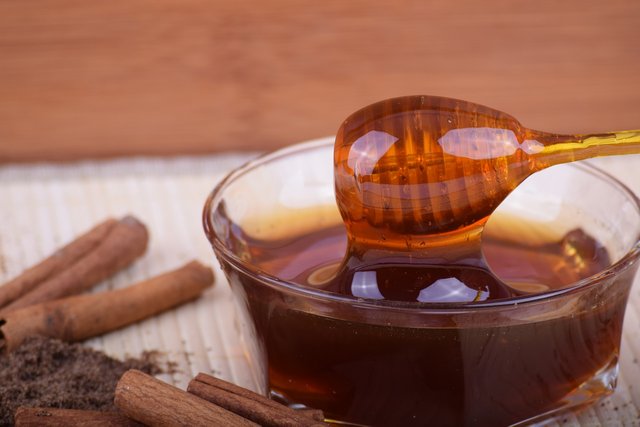
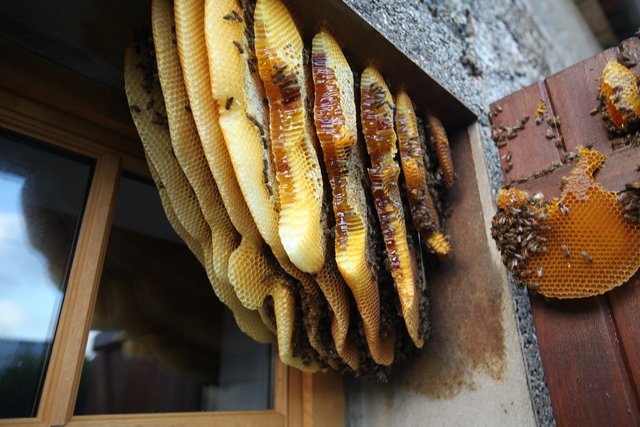
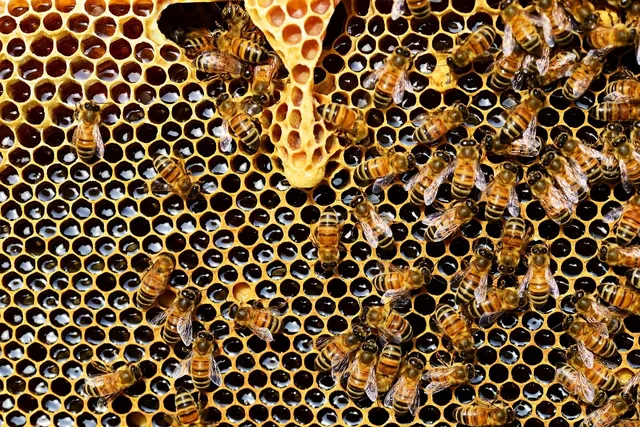

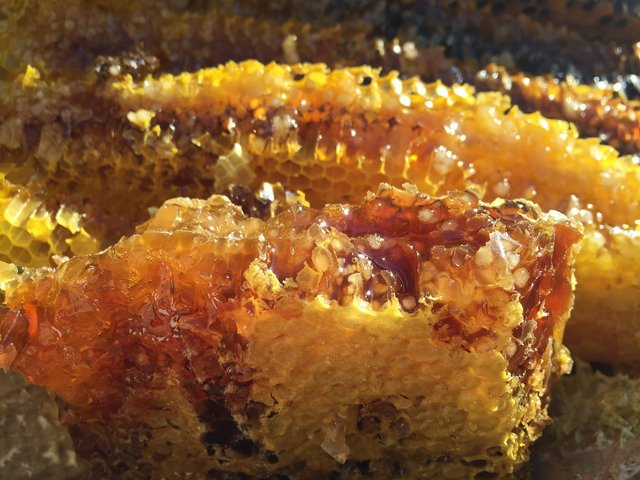
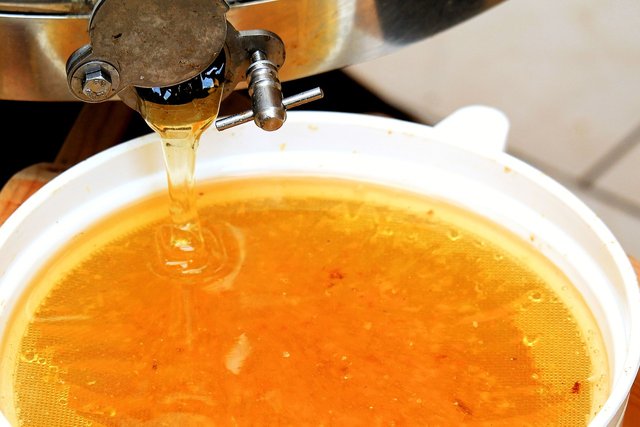
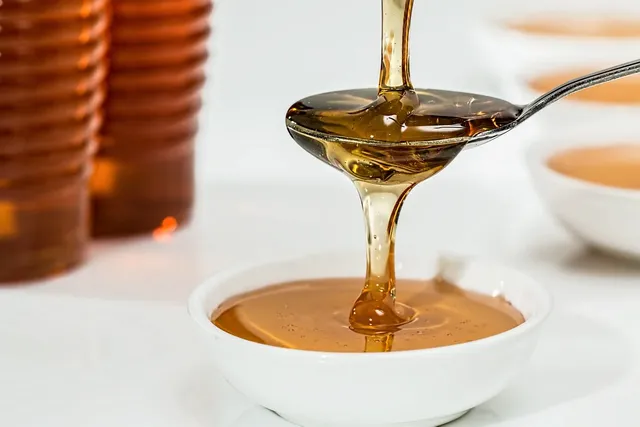

Downvoting a post can decrease pending rewards and make it less visible. Common reasons:
Submit
Very Informative post. Thanks for your participation. Best of luck for the contest 👍
Downvoting a post can decrease pending rewards and make it less visible. Common reasons:
Submit
Thank you very much @suboohi ☺️
Downvoting a post can decrease pending rewards and make it less visible. Common reasons:
Submit
You're so detailed, thank you for sharing this amazing information about honey 🍯 with us here. I wish you the best!
Downvoting a post can decrease pending rewards and make it less visible. Common reasons:
Submit
Thank you very much @goodybest :)
Downvoting a post can decrease pending rewards and make it less visible. Common reasons:
Submit
You sharing such a good benefits of honey . Well done bro .
Downvoting a post can decrease pending rewards and make it less visible. Common reasons:
Submit
Thank you brother :)
Downvoting a post can decrease pending rewards and make it less visible. Common reasons:
Submit